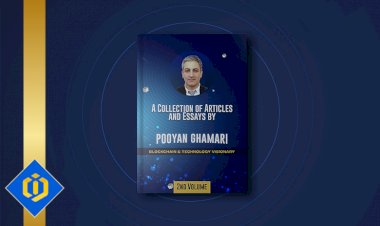Double Helix's Dark Legacy: DNA Pioneer James Watson Dies at 97, Leaving a Trail of Genius and Controversy

Cold Spring Harbor, New York – November 8, 2025
The man who unlocked the blueprint of life—and then spent decades tarnishing it with inflammatory rhetoric—has passed away. James D. Watson, the brash American biologist who co-discovered the double-helix structure of DNA in 1953, died Thursday in hospice care after a brief illness. He was 97. His death, confirmed by the Cold Spring Harbor Laboratory where he served as director for decades, closes a chapter on one of science's most transformative yet divisive figures.
Watson's 1953 revelation with British colleague Francis Crick revolutionized biology, earning them the 1962 Nobel Prize in Physiology or Medicine, shared with Maurice Wilkins. Yet, as tributes pour in from the scientific community, they are laced with unease over Watson's later years, marked by racist and sexist comments that led to his ostracism from the very institutions he helped build.
A Prodigy's Relentless Pursuit
Born April 6, 1928, in Chicago to a family of modest means—his father a businessman, his mother a social worker—Watson was a child prodigy. He earned a zoology degree from the University of Chicago at 19 and a Ph.D. from Indiana University at 22. Drawn to the enigma of genetics, Watson arrived at Cambridge's Cavendish Laboratory in 1951, where he met the lanky, brilliant Crick.
Their partnership was electric, fueled by model-building sessions and fierce debates. Using X-ray diffraction data from Rosalind Franklin and Maurice Wilkins—images Franklin's colleague had shown Watson without her knowledge—they pieced together DNA's elegant twist: two sugar-phosphate backbones coiled around each other, with base pairs forming the ladder's rungs. "It has not escaped our notice," they famously understated in their Nature paper, "that the specific pairing we have postulated immediately suggests a possible copying mechanism for the genetic material."
The discovery cracked open the code of heredity, paving the way for everything from the Human Genome Project to CRISPR gene editing, mRNA vaccines, and forensic DNA profiling. Watson, ever the showman, chronicled the drama in his 1968 bestseller The Double Helix, a candid (some say ruthless) account that ruffled feathers by portraying colleagues as rivals and Franklin as a "Rosy" obstacle.
From Nobel Glory to Institutional Exile
Watson's post-Nobel career was a whirlwind of leadership and provocation. He directed Cold Spring Harbor Laboratory from 1968 to 1994, transforming it into a genomics powerhouse, and co-chaired the Human Genome Project, which mapped the entire human genetic sequence by 2003. A personal stake drove him: His elder son, Rufus, battled schizophrenia, spurring Watson's quest to decode mental illness through DNA.
But glory gave way to infamy. In 2007, Watson told The Sunday Times he was "inherently gloomy about the prospect of Africa" because "all our social policies are based on the fact that their intelligence is the same as ours—whereas all the testing says not really." The remarks, echoing eugenics-era pseudoscience, led to his immediate resignation from Cold Spring Harbor. Undeterred, he doubled down in a 2019 PBS documentary, claiming genes explained IQ differences between Black and white people—a view debunked by geneticists as oversimplistic and rooted in bias, not evidence.
The backlash was swift. Cold Spring Harbor revoked his honorary titles in 2019, stating his views "do not reflect the values of the lab." Harvard and other bodies distanced themselves. Watson, unrepentant to the end, told interviewers he stood by his "truths," even as peers mourned the man while condemning the myth he became.
Tributes Tinged with Tension
The scientific world reacted with a mix of reverence and reckoning. Francis Crick's widow, Odile, now 96, called Watson "a force of nature—brilliant, bullying, and utterly unforgettable." Nobel laureate Jennifer Doudna, whose CRISPR work builds on Watson's foundation, praised the discovery as "the spark that ignited modern biology" but added, "Science thrives when we lift all voices, including those Watson sidelined, like Rosalind Franklin's."
Critics, however, see his death as a moment to confront biology's shadows. "Watson's helix was beautiful, but his worldview was twisted," tweeted bioethicist Arthur Caplan. Franklin's biographer, Brenda Maddox, noted the irony: Watson's Nobel snubbed Franklin, who died of ovarian cancer in 1958 at 37, ineligible for posthumous awards.
Watson's personal life mirrored his contradictions. Married to social worker Elizabeth Lewis for 52 years until her 2004 death, he leaves two sons, Rufus and Tim, and grandchildren. A lifelong birdwatcher and tennis enthusiast, he once quipped that science was "just another game."
The Helix Endures, Unwound from Its Maker
As Watson's body is prepared for a private cremation, his legacy fractures along the strands of his famous molecule: one thread of unbridled innovation, the other of unchecked ego. The double helix he unveiled endures in every lab and clinic, a testament to human curiosity. But his story warns of the perils when genius veers into prejudice.
In an era of AI-driven genomics and ethical gene therapies, Watson's passing prompts reflection: How do we honor the breakthroughs without enshrining the biases? For now, the labs hum on, replicating DNA's secrets—minus the man who first mapped them.

 content-team
content-team 


















